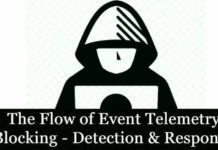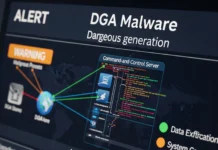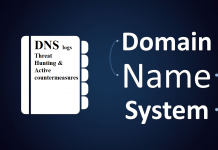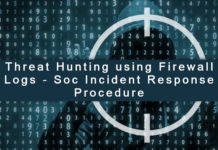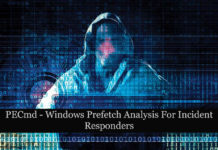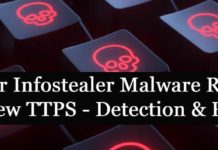With the way law is practiced now, digital data isn’t just part of the case—it often is the case. According to Cellebrite, a global leader that partners with public and private organizations to transform how data is managed in investigations—over 95% of criminal cases now depend on some form of electronic data. For public defenders, this isn’t just a trend; it’s an overwhelming deluge of body-worn camera footage, jail calls, and vast discovery files that can create a significant imbalance against better-resourced prosecution offices.
This digital transformation has left many public defenders struggling to keep up with the sheer volume of data. Manually sifting through this information is no longer sustainable and risks missing case-defining details. To counter this, leading public defender offices are adopting modern criminal defense case management system designed to automate workflows, centralize evidence, and level the playing field against better-resourced opponents.
This article provides a practical guide for managing digital evidence, from foundational best practices to advanced strategies for leveraging technology to build a stronger defense.
Key Takeaways
- Digital evidence now dominates criminal cases, requiring strategic management, not just reactive handling.
- Mastering foundational best practices like maintaining the chain of custody is non-negotiable for evidence integrity and admissibility.
- Leveraging specialized case management software features is essential for efficiently reviewing, analyzing, and redacting vast volumes of digital evidence.
- Public defenders must proactively scrutinize and challenge the prosecution’s digital evidence collection and interpretation methods to uphold due process.
The Modern Caseload: Common Types of Digital Evidence You’ll Encounter
The term “digital evidence” is broad, encompassing a wide array of formats that can quickly overwhelm a caseload. Understanding the most common and time-consuming categories is the first step toward developing a strategy to manage them effectively. You’ll regularly encounter a mix of video, audio, forensic data, and digital documents.
For public defenders, the most challenging types often include:
- Video Evidence: This category includes body-worn camera footage, dashcams, interrogation recordings, and surveillance videos. The sheer volume and length of this footage make manual review incredibly time-intensive.
- Audio Evidence: Recorded jail calls, wiretaps, and 911 calls fall into this group. The main challenges here are the poor quality of recordings and the immense difficulty of manually transcribing and searching for key moments.
- Device Forensics: This involves data extracted from cell phones, computers, and tablets. It can include thousands of text messages, call logs, browsing histories, and precise location data that require careful analysis.
- Digital Documents & Data: This catch-all category covers everything from police reports and emails to social media records and complex financial or administrative datasets that must be organized and cross-referenced.
The Foundation of a Strong Defense: Best Practices for Evidence Handling
Before you can analyze evidence, you must handle it correctly. The National Institute of Justice mentioned that following disciplined procedures is non-negotiable—it’s essential for preventing evidence from being compromised or successfully challenged in court. Adhering to these foundational best practices preserves the integrity of your case.
1. Document Everything: The Chain of Custody
For digital evidence, the chain of custody is a complete, chronological record detailing who accessed, handled, or transferred a file and when. Maintaining this log is critical for proving the authenticity and integrity of digital evidence in court. Any gap or inconsistency can render a crucial piece of evidence inadmissible. Modern case management systems help by automating much of this process, providing an auditable trail for every digital asset.
2. Preserve the Original: The “Golden Rule” of Digital Forensics
The cardinal rule of digital forensics is to never work from the original evidence file. Always create a forensic copy or a bit-for-bit image of the original data and conduct all your analysis on that copy. This simple practice prevents any inadvertent alteration, corruption, or spoliation of the original evidence, ensuring it remains pristine for court proceedings.
3. Standardize Your Intake Process
High-volume offices cannot afford to have an ad-hoc evidence process. You need a consistent, repeatable protocol for receiving, logging, and securely storing all digital evidence. A standardized intake process prevents chaos, reduces human error, and ensures every member of the legal team knows exactly where to find what they need, fostering accountability and efficiency.
How to Efficiently Review and Analyze Evidence
While handling evidence correctly is vital, the real bottleneck for most public defenders is efficiently analyzing the vast quantities of data. This is where leveraging technology ceases to be a luxury and becomes a necessity for productivity and leveling the playing field. Specific software features can transform hours of manual labor into minutes of focused work.
Automated Transcription
Searchable Video & Media
Centralized Evidence Repository
Redaction Tools
Challenging the Prosecution’s Digital Evidence
A strong defense isn’t just about managing your own evidence—it’s about proactively scrutinizing the prosecution’s. Upholding due process means questioning the integrity, collection, and interpretation of the state’s digital evidence. Arming yourself with the right questions can uncover weaknesses in their case.
Here are key questions to ask when challenging the prosecution’s digital evidence:
- Chain of Custody Scrutiny: “Can the prosecution provide a complete, unbroken, and verifiable chain of custody for their digital evidence? Are there any gaps, inconsistencies, or unexplained access events?”
- Collection Methods Integrity: “Were forensically sound methods used to collect this data? Is there any possibility of contamination, alteration, or incomplete collection that could have omitted exculpatory evidence?”
- Interpretation & Bias: “Is their expert’s interpretation of the data the only plausible one? Are there alternative explanations or contexts that were overlooked? Is there potential for confirmation bias in their analysis?”
In many cases, it is also valuable to consult with a defense-side forensic expert who can interpret complex digital evidence and provide a compelling counter-analysis to the prosecution’s claims.
Conclusion
Taming the digital evidence deluge requires a two-pronged approach: disciplined, foundational best practices for evidence handling combined with powerful, purpose-built technology to drive efficiency. With the right strategy and tools, public defenders can transform the overwhelming challenge of digital evidence into a strategic advantage.
By doing so, you not only manage the flood of information but also use it to build stronger, more effective defenses for your clients.
Ready to level the playing field? Learn more about how DEFENDERbyKarpel’s specialized criminal case management software, with its comprehensive evidence management and workflow features, can transform your practice.




